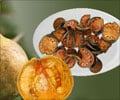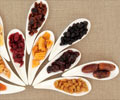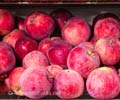- R. Mala. “Nutrient content of important fruit trees from arid zone of Rajasthan” Journal of Horticulture and Forestry Vol. 1(7) pp. 103-108 September, 2009.
- Malik S.K. et al. “GENETIC RESOURCES OF TROPICAL UNDERUTILIZED FRUITS IN INDIA” National Bureau of Plant Genetic Resources Pusa Campus, New Delhi 110 012, INDIA.
Importance of Underutilized Fruits
'Taste every fruit of every tree in the garden at least once. It is an insult to creation not to experience fully' said famous British actor Stephen Fry. Tropical countries like India are blessed with a variety of fruits and vegetables that they naturally grow and produce.
Fruits like mango, apples, banana, guava, citrus fruits, are available in plenty due to their distinct flavor and taste. These fruits also constantly enjoy the attention of organic scientists and horticulturists and are further improved in their quality. However, fruit lovers and the common man should also remember that there are other fruits too that are sometimes termed as "underutilized fruits" that are hundred times more nutritious than the popular fruits in terms of their vitamin C, carotenoids, and antioxidants. Also, they are inexpensive and are easily available.
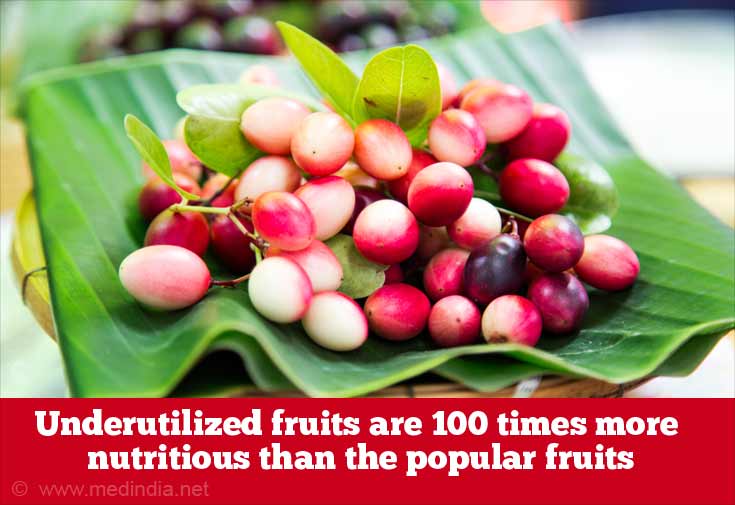
Some of these too have a distinct flavor and taste and these are easy to grow even under harsh conditions as compared to exotic fruits like apples, mangoes, kiwis, cherries, grapes and their hybrids.
The underutilized fruit plants are also naturally disease-tolerant and are adapted to hot, hardy climate conditions very much in sync with equatorial climate conditions. In India, they are found locally in the dry regions of Rajasthan, Madhya Pradesh, and Gujarat. Some of them are confined to natural wild and semi-wild arid zones.
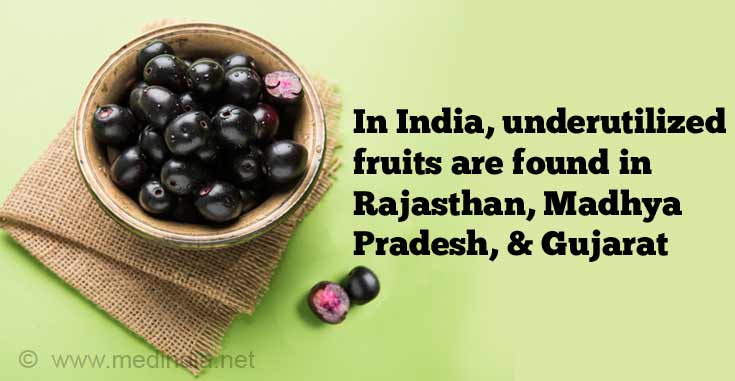
Although, the nutritional value of the majority of the forest foods is not precisely known, most of them which have been researched have been found to be a storehouse of nourishment.
There are various obvious reasons for the underconsumption of underutilized fruits. -
- Most indigenous fruit trees are not commonly cultivated on the farm and there is scant and dispersed knowledge about their fruits and their nutritive value
- People prefer to have fruits with good taste since wild fruits have high levels of unpleasant tasting tannins and glycosides
- Indigenous fruits are neither large nor fleshy and contain lots of seeds
- The fruits are highly perishable and difficult to store in the fresh form
- Most wild fruits are not really easy and handy to eat
- Some fruit species are not acceptable as fresh fruit because of high acidity and/or strong astringent taste
- Most of them are often available only in the local markets and are rarely known in other parts of the country
On the contrary, the benefits of such underutilized fruits far exceed their limitations.
- They are cheap and highly nutritious.
- They have known medicinal and therapeutic properties and are used by the local people to cure various diseases.
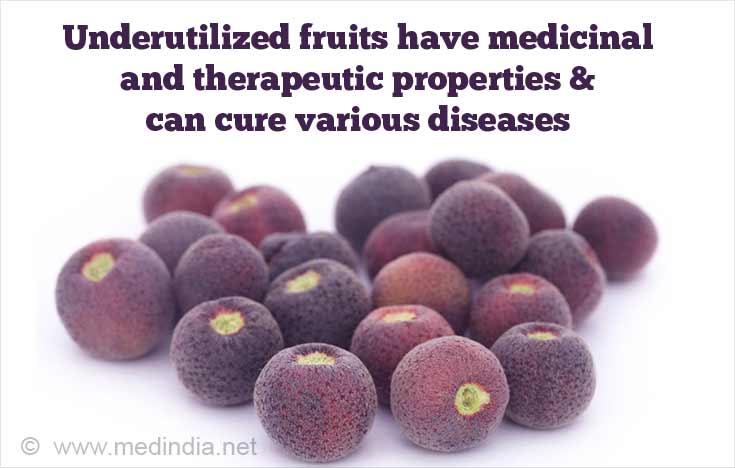
- Many of them, the fruit, seed, leaf of the plant are used as curative foods in the traditional Indian Medicine and Ayurveda. For example, amla is used for treating diabetes, bael fruit for beating the heat, bael leaf for diabetes, and ber and phalsa being highly rich in vitamin C are used in cases of vitamin C deficiency.
- In addition, some have an excellent flavor and taste and are used for preparing delicacies at home. eg. Ber, matira, pickles made of lasora, or dishes made with ker, sangri, kachri, and kumat in Rajasthan.
Nutrient Value of Some Underutilized Fruits (per 100 grams)
| Fruit | Protein (g) | Fibre (g) | Calcium (mg) | Phospho -rous (mg) | Iron (mg) | Vitamin A (IU) | Vitamin C |
| Underutilized Fruits | |||||||
| Hingota (Balanites aegyptiaca) Ripe fruits eaten raw or sun dried and stored as dates | 4.9 | 3.5 | 147 | 58 | 4 | - | 46 |
| Ker (Capparis deciduas) Shrub; fresh dried tiny unripe fruits used as vegetable, fresh red fruits eaten raw | 5.9 | 12.3 | 153.8 | 50.8 | 2 | - | 133 |
| Lasora (Cordia spp.) Fruit used as a veg or in pickles, ripe fruits freshly eaten | 2 | 2 | 55 | 275 | 6 | - | - |
| Sangri (Prosopis cineraria) Pods are locally called sangria; chocolate color, dried pods are eaten as a vegetable | 23.2 | 20 | 414 | 400 | 19 | 523 | |
| Meetha Pilu (Salvadora oleoides) Fruits are red brown when ripe; eaten raw when ripe; can be cooked; dried and stored | 6 | 2 | 6 | 76 | 8 | - | - |
| Bael (Aegle marmelos) Fruit are small to large with a hard cover; pulp eaten or made in a fresh sherbet, bael leaves good for diabetics | 1.8 | 2.9 | 85 | 31.8 | 0.6 | 91.6 | 1.1 |
| Chironji (Buchanania lanzan) Fruit eaten raw; sweetish sub acidic flavor | 7.3 | 5.2 | - | - | - | - | 2 |
| Karonda (Carissa spp.) Immature fruits used as vegetable, mature fruits eaten raw. Fruits are processed as a pickle, jam, marmalade | 1.1 | 1.8 | 21 | 28 | - | 1619 | 9-11 |
| Aonla, Amla (Emblica officinalis) Fruit eaten fresh, processed and preserved | 0.5 | 1.9 - 3.4 | 20 | 26 | 0.48 | 17 | 500-625 |
| Phalsa (Grewia subinaequalis) Small tiny brown fruits; used to prepare a sherbet | 1.3 | 1.2 | 129 | 39 | 3.1 | 800 | 22 |
| Mahua (Mahua indica) Ripe fruits eaten raw or cooked | 1.3 | - | 45 | 22 | 1.1 | 512 | 40.5 |
| Khirni (Manilkara hexandra) Fresh fruits are very sweet and eaten raw as well as after drying | 0.48 | - | 83 | 17 | 0.92 | 675 | 15.67 |
| Manila tamarind (Pithecellobium dulce) Pulp consumed raw | 2-3.3 | 1.1 | 13 | 42 | 0.5 | 25 | 138 |
| Jamun (Syzygium cumini) Eaten as a fresh fruit Jamun seeds contain various alkaloids such as jambosin and glycoside which inhibits the conversion of starch into sugars | 0.7 | 0.9 | 15 | 15 | 1.2-1.6 | 80 | 18 |
| Tamarind (Tamarindus indica) | 2 | 2.9 | 34-94 | 34-78 | 0.2-0.9 | - | 44 |
| Ber (Zizyphus spp.) Eaten as a fruit | 2 | 2 | 60 | 120 | 7 | - | 88 |
| Common Fruits | |||||||
| Apple | 0.2 | 1 | 10 | 14 | 1 | - | 1 |
| Banana | 1.2 | 0.4 | 17 | 36 | 0.9 | 78 | 7 |
| Orange | 0.7 | 0.3 | 26 | 20 | 0.3 | 1104 | 30 |
| Papaya | 0.6 | 0.8 | 17 | 13 | 0.5 | 666 | 57 |
| Grapes | 0.5 | 2.9 | 20 | 30 | 0.5 | - | 1 |
| Mango | 0.6 | 0.7 | 14 | 16 | 1.3 | 2743 | 16 |
| Dates (dried) | 2.5 | 3.9 | 120 | 50 | 7.3 | 26 | 3 |
Source: http://www.nbpgr.ernet.in/download/UUF-BOOK.pdf
http://www.academicjournals.org/jhf/PDF/pdf2009/Sept/Rathore.pdf






